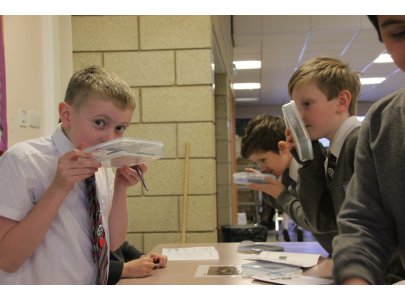500 children get up close to Cumbernauld’s wildlife
,
I can’t believe that I have been on placement for a year with the Cumbernauld Living Landscape, what a busy time it has been. Over 500 children have now taken part in my pine marten workshop! The past five months have been spent developing and delivering pine marten and habitat workshops to spread the news of the town’s wildlife and ask young people what changes they would make to improve it. So far we have delivered the workshops to 5 primary schools and 7 local groups. Next year looks to be just a productive with 8 bookings already. So what’s all the fuss about?
Images of this iconic Scottish animal were first captured on camera traps I set up in Cumbernauld as a volunteer. I am still amazed to this day that we have such a shy and elusive animal in the town. Finding the pine marten in Cumbernauld highlights the importance of well-connected greenspaces and indicates that we have some fantastic ancient woodland. Pine martens nest in tree hollows and they need really old trees that have space for potential dens to develop. They are Mustelids (musk glands on their bottoms) in the same family as stoats, ferrets, weasels and badgers. Once hunted to near extinction they are now making a come-back thanks to the expansion of their woodland habitat and full legal protection as of 1988. So it is great to see them back in Cumbernauld.
I was able to share my excitement of finding these amazing animals by developing a children’s workshop with the People and Wildlife team from the Scottish Wildlife Trust. The pine marten workshop explores the wildlife that can be found in Cumbernauld and gets hands on with the sights, sounds and smells of the town’s natural environment. There are 5 stations where the children explore different activities:
1. Feeling furry – getting tactile with animal hides to discover what is in the box

2. Track and trails – matching tracks to local wildlife
3. Skull-duggery – examining skulls to discover what animals they came from
4. Sounds like – listening to the sound of the woods to identify who lives there
5. Dropping hints – sniffing out animals by the smell of their scats (poo!)
All of these activities bring children closer to nature and we have some amazing natural detectives out there. Children have very inquisitive minds and there were times when I thought I would not be able to answer some of their questions. However I persevered and answered each and every one of them. But this is only half of the story, as the children have been exploring their school grounds in our follow up Habitat estate agents workshops. I’ll leave the telling of this for the New Year, until then Merry Christmas and all the best for 2015!
